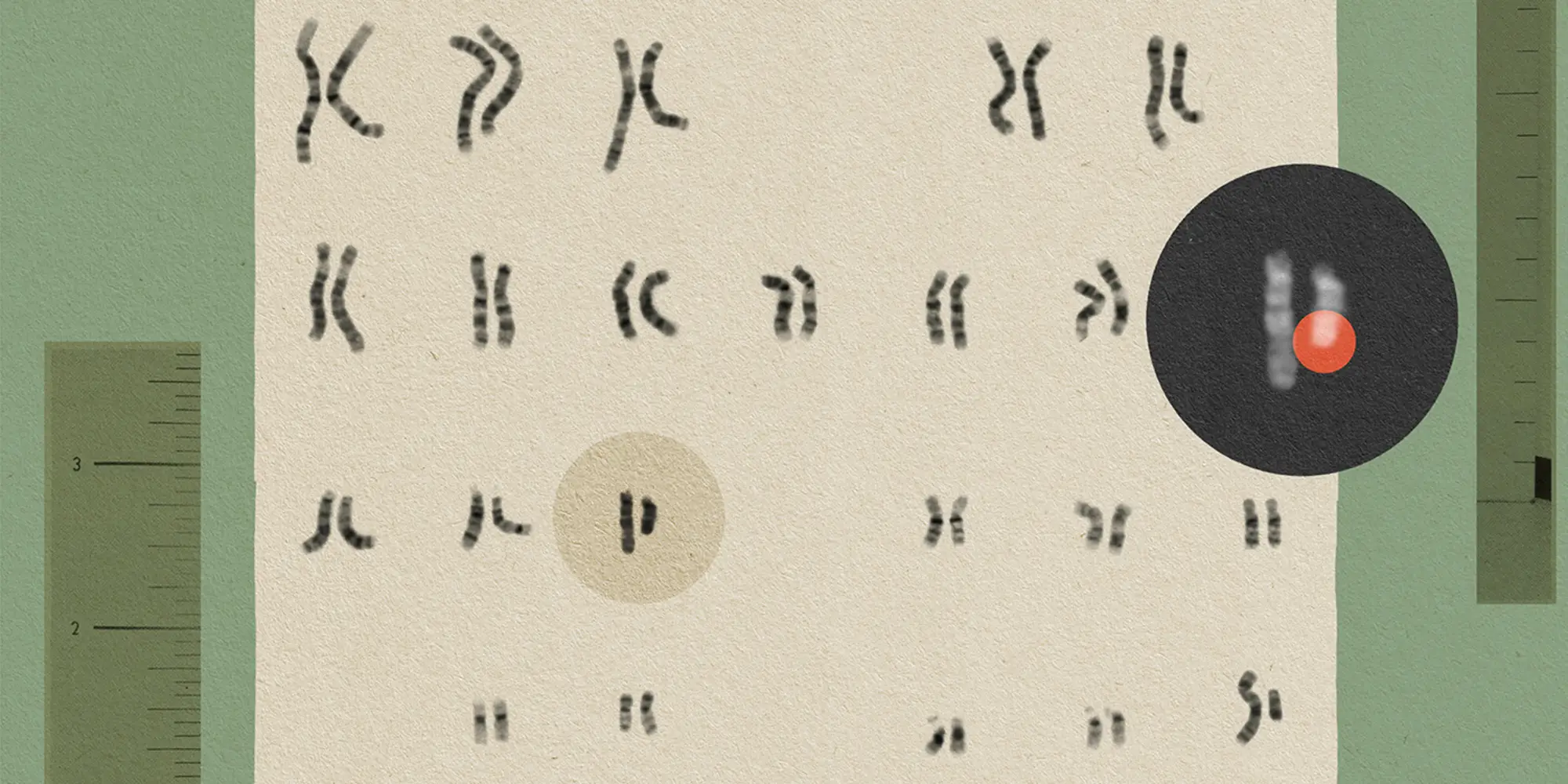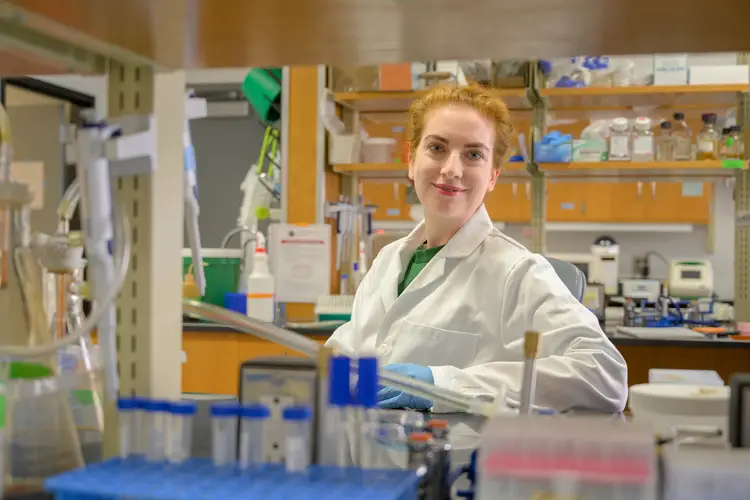
Biological Sciences Professor Awarded Grant To Advance Prader-Willi Syndrome Research
Media Inquiries
Prader-Willi syndrome, a genetic condition that affects 350,000 people worldwide, causes chronic hunger, growth hormone deficiency and behavior challenges. Although researchers have determined that the rare neurodevelopmental disorder results from abnormalities on the 15th chromosome, many questions remain regarding how those abnormalities lead to the complex combination of symptoms experienced by patients.
A new collaboration between Carnegie Mellon University and University of Pittsburgh scientists hopes to change that.
Carnegie Mellon’s Joel McManus(opens in new window), associate professor in the Department of Biological Sciences(opens in new window), and Pitt’s Robert Nicholls, professor in the Department of Pediatrics, received a $162,000 grant from the Foundation for Prader-Willi Research(opens in new window) to study the regulation and function of a key gene that is usually deleted in patients with the disorder.
In most cases, PWS is not inherited but caused by a random genetic error — a section of the paternal copy of chromosome 15 is deleted. Several genes are in the missing section, and it’s not yet known how their loss contributes to PWS symptoms. McManus and Nicholls are studying one of the deleted genes, SNURF-SNRPN.
“SNURF-SNRPN is a very complex gene — and a unique one — because it makes two proteins from the same gene,” McManus said. “So, the same messenger RNA makes two proteins. And that’s pretty unusual.”
A gene contains the instructions for making a particular protein. Messenger RNA (mRNA) carries those instructions to ribosomes, the cell’s protein-making machinery, which read the mRNA sequence and translate it into a protein. While a single gene can code for multiple proteins, that usually happens during a process called splicing, when certain sections of the genetic code are cut out and the remaining bits are spliced together to make a mature mRNA. In the majority of cases, especially in humans, once an mRNA is produced, it translates into one protein. But not SNURF-SNRPN.
Nicholls, who has dedicated his career to studying the genetic basis of PWS, was the first to discover that SNURF-SNRPN produces two proteins from one mRNA. In the 25 years since that discovery, he said he has wondered how exactly those two proteins, SmN and SNURF, were made. When he saw a paper the McManus lab published about unusual ways that proteins are produced, Nicholls thought SNURF-SNRPN might be controlled in a similar way. So he reached out to McManus.
Coincidentally, McManus was already a fan of Nicholls' groundbreaking discoveries in PWS research. “Rob’s elegant research defined the genetic basis for PWS,” he said. “It’s something that I have taught in my CMU genetics course for years, so I’ve long appreciated his science. It was really exciting when he contacted me about SNURF-SNRPN.”
“We started talking and realized we had a lot of overlapping interests and that we could do this collaboration,” Nicholls said. “There’s so much complexity in the Prader-Willi syndrome genetic region, you need people with different skills and abilities that you can combine to improve the science beyond what you could do yourself in the lab.”
McManus’ lab focuses on understanding the mechanisms that regulate mRNA translation, and how variation in RNA sequences and structures affects protein production. Even though he has largely worked with yeast in the past, McManus said he is excited to turn his focus toward human genes. Nicholls said he is thrilled to be partnering with McManus.
“A lot of important biomedical and clinical breakthroughs come from the basic sciences, so you need people like Joel with the foundational science work from yeast who can bring insight into complex human disease issues,” Nicholls said.
In one focus of the grant, the team will work to understand how the two proteins are translated from the same mRNA. Preliminary experiments have indicated that specific RNA sequences may control how much of the SmN and SNURF proteins are made.
McManus and Nicholls are also looking into what SNURF-SNRPN’s normal function is in the cell to help pinpoint what might go wrong when it is missing.
“We know very little about what SNURF does, except that it’s found in the nucleus where splicing occurs,” McManus said. “And we don’t really understand how the loss of the SNRPN protein, which is a splicing factor, may affect splicing. There might be a splicing or RNA-processing defect that happens in patients with PWS.”
To probe how the loss of SNURF-SNRPN may affect the splicing of all the other genes in the cell, Nicholls' lab will delete SNURF-SNRPN in tissue culture cells and perform an RNA sequencing experiment to reveal the types and quantities of all the mRNA molecules that the cells produce. McManus has experience using computational techniques to search such high-throughput datasets, in this case, 10,000 to 15,000 mRNAs. He’ll compare those findings with a control group of cells that still have SNURF-SNRPN.
“We’ll be searching for any genes that have a change in splicing. We might find something that says certain genes are being spliced in the wrong way, which can completely change the function of that gene’s protein, or make the protein nonfunctional,” said McManus, who also holds a courtesy appointment in Carnegie Mellon’s Ray and Stephanie Lane Computational Biology Department(opens in new window).
Ultimately, the findings might lead to an understanding of how to address the resulting malfunction in the cell.
“This project illustrates the importance of basic science in revealing biological mechanisms important in health and in disease. Computational approaches increasing play a key role in this kind of work, enabling interpretation of large-scale datasets,” said Barbara Shinn-Cunningham(opens in new window), the director of the Neuroscience Institute and George A. and Helen Dunham Cowan Professor of Auditory Neuroscience at Carnegie Mellon.
“There’s a lot of complexity with all these genes and mechanisms, and there’s still a lot of unknowns and difficulties with the syndrome for the patients and for their families,” said Nicholls, who received a lifetime achievement award in 2013 from the Prader-Willi Syndrome Association USA. That same year he cycled from the Pacific Ocean to the Atlantic Ocean in 28 days to raise awareness and funds for Prader-Willi syndrome research.
McManus, while new to Prader-Willi syndrome research, is honored to be working on this project.
“This is the first time I’ve worked on a project that may have a direct impact on human health in such a way,” he said. “It’s both humbling and gratifying to have this opportunity.”


